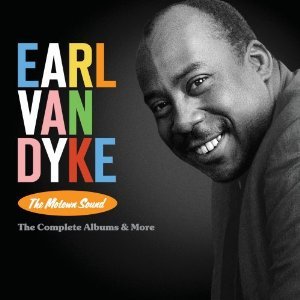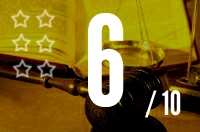Tags
 Soul S 35018 (B), November 1965
Soul S 35018 (B), November 1965
B-side of The Flick (Part 2)
(Written by James Jamerson, Earl Van Dyke and Robert White)
 Yep, that’s right, Part 1 is the B-side. For the third time in Motown history, following the little-heard likes of the Swinging Tigers’ Snake Walk and the Twistin’ Kings’ Congo, a lengthy house band instrumental spans both sides of a Motown single. Once more (just as with Congo) the cutting-in-half is imposed for reasons of technical limitations rather than artistic sensibility, the running time of a 7″ 45rpm record not yet allowing for full reproduction of the musicians’ lengthy R&B-jazz jams.
Yep, that’s right, Part 1 is the B-side. For the third time in Motown history, following the little-heard likes of the Swinging Tigers’ Snake Walk and the Twistin’ Kings’ Congo, a lengthy house band instrumental spans both sides of a Motown single. Once more (just as with Congo) the cutting-in-half is imposed for reasons of technical limitations rather than artistic sensibility, the running time of a 7″ 45rpm record not yet allowing for full reproduction of the musicians’ lengthy R&B-jazz jams.
Most of the history, the stuff I wanted to say about the context and background and reason for this record, we’ve already discussed when talking about The Flick (Part 2), and so this write-up will end up being pretty brief by comparison. Still, I don’t just want to talk about Part 1 here, but also about parts 3 and 4.
 A couple of years ago, Motown issued an Earl Van Dyke retrospective, That Motown Sound (pictured left), comprising both of the Motown studio albums released under Earl’s name, plus a crateload of bonus tracks, including a bunch of semi-improvised jams that give further insight into the Funk Brothers’ “true” sound. One of those jams, it would appear, is a full-length run through what became the 7″ edits of The Flick, including the transition between Part 2 (as already heard on the A-side here) and the introductory segment, here released as “Part 1”, not to mention a lengthy extra six-minute coda labelled “Parts 3 and 4”.
A couple of years ago, Motown issued an Earl Van Dyke retrospective, That Motown Sound (pictured left), comprising both of the Motown studio albums released under Earl’s name, plus a crateload of bonus tracks, including a bunch of semi-improvised jams that give further insight into the Funk Brothers’ “true” sound. One of those jams, it would appear, is a full-length run through what became the 7″ edits of The Flick, including the transition between Part 2 (as already heard on the A-side here) and the introductory segment, here released as “Part 1”, not to mention a lengthy extra six-minute coda labelled “Parts 3 and 4”.
(The borders between the different parts aren’t marked, but if you’re curious, the tune gets more laid back after “Part 2” finishes, a piano takes over the lead for a while (Part 3?) – there’s still a hint of organ here and there, so presumably this isn’t Earl Van Dyke himself, unless overdubs were involved; the feeling is more smooth jazz, more relaxed, until finally we’re roused again for the coda (Part 4?), another blaring organ-led section similar to Part 2).
As already mentioned, the two cuts chosen for single release were definitely altered before reaching this 45 (with bar-room crowd noise added to a live-in-the-studio recording). Furthermore, while it was cut on the same day, the full-length “Parts 1-4” version also seems to be a different take from the same session, which would mean at least one of them was a pre-rehearsed joint, which in turn kind of belies the “off the cuff” freewheeling jam spirit the released single version tries to cultivate.
I’m mentioning all of this because Part 1 is a strange beast – much like the first half of another Motown single peremptorily hacked into two pieces, Stevie Wonder’s Fingertips (Part 1), there’s a feeling of warming up here, an introduction to something better (and, like Fingertips on its reissue, we’ve already heard what that “something better” is on the A-side). Part 1 sets itself up even more than Part 2 as a live improvisation, and so the knowledge that it’s not live and possibly not an improvisation makes it hard to hear it the same way again.
It’s also a less good tune than the second part; the killer bass groove that won my heart on Part 2 doesn’t really come to prominence until we’re well underway, and most of Part 1 is taken up with a jauntier, less experimental organ-led pop piece, and that bassline is subdued in favour of a different time signature that changes the emphasis of the whole track. (The transition from Part 1 to Part 2 is missing from the 45, which is why it was such a buzz to hear it on the That Motown Sound compilation; the effortless way Van Dyke, Benjamin, Jamerson and co. segue between what are really two rather different tunes is extremely impressive and would have been a real boon to have here.)
Don’t get me wrong, Part 1 is still funky enough, but it feels less daring, and consequently I found it less thrilling; like a step back towards the likes of Soul Stomp. And what it really says to me, in truth, is that – as brilliant and talented as these guys obviously were, and this record’s more evidence of it – the Funk Brothers simply weren’t built to create hit records on their own after all.
MOTOWN JUNKIES VERDICT
(I’ve had MY say, now it’s your turn. Agree? Disagree? Leave a comment, or click the thumbs at the bottom there. Dissent is encouraged!)
You’re reading Motown Junkies, an attempt to review every Motown A- and B-side ever released. Click on the “previous” and “next” buttons below to go back and forth through the catalogue, or visit the Master Index for a full list of reviews so far.
(Or maybe you’re only interested in Earl Van Dyke or the Funk Brothers? Click for more.)
 |
 |
| Earl Van Dyke & the Soul Brothers “The Flick (Part 2)” |
The Supremes “Dr. Goldfoot and the Bikini Machine” |
DISCOVERING MOTOWN |
|---|
Like the blog? Listen to our radio show! |
| Motown Junkies presents the finest Motown cuts, big hits and hard to find classics. Listen to all past episodes here. |


Not quite as enjoyable as part 2 and I agree with the lower mark. Nevertheless, still a worthwhile instrumental. Its strange that on many of Motown’s recordings that spanned both sides of a single part 2 proved the most popular side. Examples, “Fingertips”, “Hip City” and “Money” by Jr Walker etc.
LikeLike
“The Flick” Part 2″ was the only side they played in Chicago, L.A. and San Francisco. It must have been the “plug side”.
LikeLike
I don’t know where I got the 45 with the prosaic yellow label, but when I played “The Flick” I scratched my head trying to put the music in perspective alongside the other Motown singles I was collecting. It hasn’t survived my many moves but I wish I had it now! A couple of decades later, when my collecting had turned to LPs I purchased a copy of “The Earl of Funk” and quickly realized it was a brand new pressing put out by a revival company, not an original Soul LP. I kept it anyway, enjoying the music (but not the bogus “crowd” overdubs) with an understanding that these guys were playing for themselves on the album. OK with me…they had already played for me a thousand times over.
LikeLike
***There is a computer problem with wordpress that is preventing the Previous/ Next links being used.
LikeLike
Thanks for the heads up. It’s apparently working now, but WordPress as a whole seems to have gone a bit peculiar over the last 24 hours. Chances are they’re trying out another one of their misguided unilateral changes (“Users can now leave comments using their Bebo account! However, there’s a small possibility that as a result of this change, at times other than 3am on Wednesdays (Moldova summer time) your site might stop displaying correctly on PCs, tablets and smartphones, and also Macs if the screen resolution is less than 7571561×81725981 and the language isn’t set to Romanian”)… which will be rolled back a few days later.
LikeLike
I’m still having the problem. I’m getting a page telling me there is a problem with the website’s security certificate. There’s the same problem on my sister’s computer and we use different browsers.
LikeLike
Cuh, for some reason it’s changed every single link on the page (on just this one review by the looks of it?) to secure links. I’ll see if I can manually fix it.
LikeLike
It’s working OK now.
LikeLike
I don’t agree with the comment stating the Funk Brothers were not built to make hit records on their own. It’s simply down to material, production and arrangement. ‘The Flick’ simply wasn’t commercial, ‘Soul Stomp’ was too ‘bid band’ sounding. ‘All for you’ would have stood a better chance in the USA but wasn’t issued. ‘Six by Six’ which sounded a bit Herb Alpert-ish might have made it, but was hardly promoted. Most big hit instrumental hits were of a MOR style, a few were surf style, a few read jazz but very few were soul/R and B. I’m sure if the Funk Brothers had recorded ‘Soulful strut’ instead of Young-Holt they would have had a massive hit.
LikeLike
This was the period when, if you bought anything on the Soul label, it was just capriciousness whether you’d get the side by side purple and white design or the newer purple swirls. The swirls appeared as early as “Fingerpop” & “Cleo’s Back,” but the old design stuck around too till at least as late as “Road Runner.”
Frankly, I was not thrilled with any of the abrupt label changes, especially the deep purple script Gordy.
LikeLike
That whole “Part 2 as the a-side” thing happened more often than a lot of people think. James Brown had recorded the lengthy “Escap-ism” (about 19 mins) in 1971. Part 1 was issued over the summer but it was parts 15 & 16 that became the hit. Same thing with “Rainbow 65” by Gene Chandler. Doncha just miss 45s??
LikeLiked by 1 person
I found this 45 in the basement of a record store where I worked in 1970.
There were boxes and boxes of 45’s – a lot of them red vinyl Motown promos along with obscure non hit items, just the ones we would see years later on the Complete Singles series.
I wish we coud go back I’d bring you all with me,
LikeLiked by 1 person
I had friends working at distributors and in record shops during the 1960s. It hit all the close-out sales, seeing thousands of new mint 45s for as little as 10¢ apiece. I just didn’t have enough money, even at that low price, to buy every record I wanted, nor did I have the time to play all the cut-out records I had never heard, when there was access to play them. That is how I amassed my vast collection of many thousands. During the succeeding years, I have heard many of those records, and I am sorry that I didn’t take out a loan and buy them at those prices. But then, I might be a record dealer now, instead of a cartoonist.
LikeLike